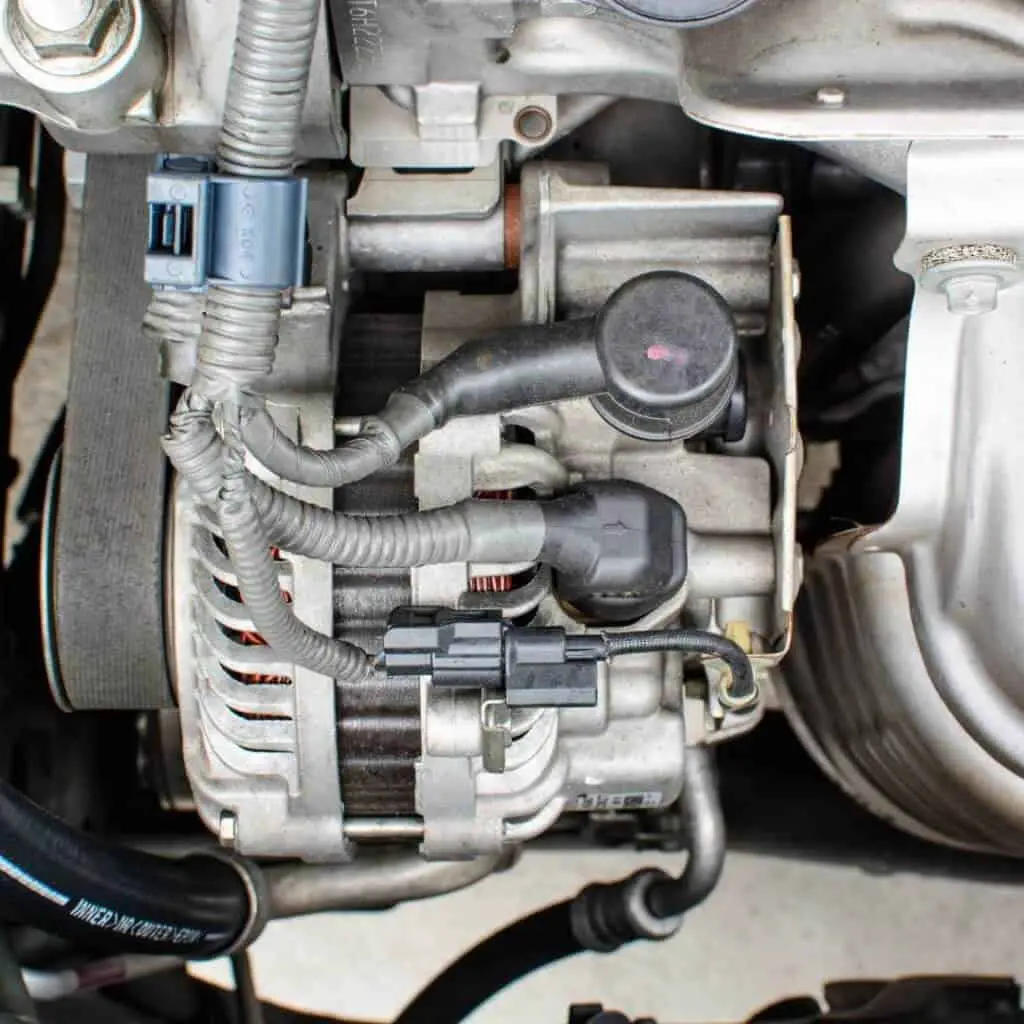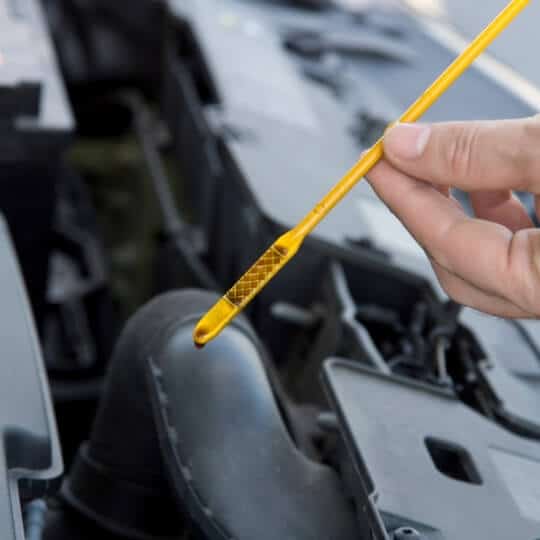If you have a Honda car, or you plan to buy it, there are certain things you should know. Honda engines come in many variations, and there are certain differences. When it comes to valve timing and lift system, there are many different technologies. The most popular are i-VTEC and VTEC technologies.
Both technologies have different use in Honda cars. But what the real i-VTEC vs VTEC difference is? We answer the question in this article.
i-VTEC vs VTEC

First of all, you must know what the terms like i-VTEC and VTEC mean. In general, VTEC stands for Variable Timing Electronic Control. VTEC is a Honda term that describes variable valve timing technology.
It uses two different camshaft profiles, and we should learn more about them.
One profile is for low RPM, while the other one is for high RPM.
The camshaft profile for low RPM ensures that the torque is good and it provides good drivability.
At the same time, the camshaft profile for high RPM has a greater lift and provides a longer duration. [1]
The system is very automatic and it allows you to have control over the car. It changes according to the RPM speed and it increases the overall horsepower.
Every RPM has different timing and optimal valve overlap. The camshaft behaves differently than the crankshaft. That is why Honda cars have different integration inside the system.
The camshaft spins at double speed when compared to the crankshaft. The camshaft design requires a specific lope at idle, and that is why Honda cars have that idle.
When designers make camshafts, they need to consider the overall RPM requirements.
The engine should be smooth at low RPM, and it should be powerful enough at high RPM. That is why the camshaft and crankshaft need to be designed in an appropriate manner.
Know when you know something about VTEC technology, we should explain more about i-VTEC technology.
What is i-VTEC Meaning?

i-VTEC meaning is very specific and it stands for Intelligent Variable Timing Electronically Controlled.
This system combines VTEC and VTC and it can be found in different Honda cars.
VTC is Variable Timing Control which allows the camshaft to be always variable.
The valve overlap can be adjusted at any speed, and camshaft gears are responsible for this possibility. In general, the power levels and efficiency are better when there is an adjustment of valve overlap.
To go back to i-VTEC, we need to understand this Intelligent Variable Timing Electronically Controlled technology.
While it combines VTEC and VTC systems, i-VTEC brings the best possibilities. The engine will be powerful and extremely efficient.
Honda added this technology to the cars in 2001, and this proves to be a good move. Engines that are powered by this technology perform better and they are simply more powerful on the road.
VTEC system controls the lift and duration of the camshaft lobes. To get more control over the valve timing, there are certain improvements made. [2]
I-VTEC ensures that this timing is optimal and that is why the engine gets the best power.
What Is the i-VTEC vs VTEC Difference?
If you wonder what the real i-VTEC vs VTEC difference is, here is the clarification.
The i-VTEC system allows the adjustment of the camshaft angle. This ensures the maximal performance of the engine.
Each RPM range requires different opening and closing of the valves, which is why the i-VTEC system adjusts accordingly.
VTEC does not do this, and only with a combination of VTEC and VTC, there is a possibility for i-VTEC to work normally.
As a result, we have increased performance and a smoother power band of the engine. This is possible at both low and high RPMs.
What Are i-VTEC Engine Advantages?

Honda developed the i-VTEC system as the continuation of engine developments. It was introduced in four-cylinder petrol engines. These engines are very specific and they deliver unique power.
By using i-VTEC, the engines have advantages like:
- Cleaner emissions
- Outstanding fuel economy
- Less weight with high output at all RPMs
Among other advantages, we should mention the ability of i-VTEC to advance the inlet valve opening. This is possible by altering the inlet camshaft phasing in order to match the engine load.
By applying this technology, the engine load is matched at every moment and this leads to better performance.
VTC and i-VTEC systems work together to provide control over the engine management system.
As a result, you get cleaner, more powerful, and more efficient fuel consumption.
I-VTEC works closely with other systems in your car in order to ensure maximum engine potential in all situations.
What Are the Main i-VTEC Engine Disadvantages?
As with any other car engine, Honda’s i-VTEC has certain disadvantages. You can notice these downsides if you drive your car for a longer period of time or if you cross certain long distances at once.
In general, i-VTEC has good performance and provides optimal speed, but there are certain problems you should be aware of when you drive a Honda with the i-VTEC engine.
The possible disadvantages of i-VTEC are:
- Engine vibrations – The lifespan of these engines is long, but you may notice engine vibrations in some situations. If you do not drive your Honda in proper conditions, the engine mount is at risk because of engine vibrations. This can be prevented by choosing a different style of driving and taking care of the engine in all circumstances.
- A knocking sound of the engine – You may drive your car only around 100,000 kilometers before you start noticing a knocking sound. This may be a result of a short drive belt life span. This problem is common in cars that need adjustments of valve clearance once in a while. By doing this, you can prevent the knocking sound of the engine.
- Changing oil too often – The Honda cars with VTEC and i-VTEC engines require frequent oil changes. There are some of the best oils for Honda Civic cars that are reliable and functional. You should take care of the car when it comes to overheating as well. Checking the water pump and coolant must be done very often in order to maintain the car properly.
How to Avoid Problems With VTEC and i-VTEC Engines?

It is important to know that you can avoid problems with Honda’s engines. There are parts of an engine that might fail from time to time. This is why you should pay attention to gaskets, bearings, and other parts of the engine that reduce in quality over time.
Replacing parts is essential if you want to keep your Honda in good condition. The heat of the engine can be maintained by the use of coolants and by checking the water pump occasionally.
At the same time, you can opt for valve adjustments in order to keep vibrations at optimal levels.
When Does i-VTEC Kick In?

In general, i-VTEC works the second you start your engine. It does not kick in at a particular speed. It works immediately.
In practice, i-VTEC consists of the timing that is variable valve timing and it happens on the intake camshaft. It always works and it is on all the time.
I-VTEC adjusts the valve timing and it changes according to your driving technique. It keeps the speed optimal and it maintains the optimal fuel efficiency.
At What RPM Does VTEC Activate?

The VTEC activation depends on many circumstances. It will occur earlier or later, and it depends on many factors.
You must consider density altitude, open or closed loop mode, ignition advance, percent load, and all the other factors.
In general, VTEC activates at 3800 – 4400 RPM, and this is a fact that most Honda car users should consider.
There is no set RPM because different driving factors can affect the activation of VTEC.
However, the range from 3800 and upper might be the best clarification.
If you still wonder what RPM does VTEC engage in, you should know that there is a difference between the valve system operations.
When an engine system changes from 3 valves to 4 valves operation, the VTEC technology comes in place. As a result, the camshaft profiles optimize for higher RPMs, and the VTEC technology takes its place in the car operations.
What Is a High RPM Engine?
In vehicles, RPM stands for the number of times when the crankshaft rotates around its axis. It is measured in minutes. [4]
At the same time, the pistons are moving up and down, and the combustion happens in the engine. The crankshaft gets the energy of the pistons.
If you want to save your engine and drive carefully, you should keep the RPM very low. By doing this, you save fuel and keep your engine protected.
A high RPM engine will simply require more fuel and the engine will need to work harder. This practice will tear the engine parts and it will lead to further degradation.
Some of the possible causes of high engine RPM are:
- Problems with speed sensor – When the speed sensor in automatic cars does not work properly, there might be problems with speed shifts. You will not shift gears when needed, and the engine will need to work harder.
- Problems with transmission fluid – When there is not enough transmission fluid in the vehicle, there might be problems with gear shifts. The same happens when the fluid starts to leak.
- Problems with idle control valve – In cars, the idle control valve helps the car to maintain the exact RPM. When the valve is not working properly, the car will have high RPM while idling.
When there are more RPMs, the engine gets VTEC acceleration. These accelerations consist of different modes that allow the engine to cope with more RPMs.
There are different mechanisms that occur when the RPM is high.
When the RPM exceeds 6,000 RPM, the VTEC system starts the wild cam-lobe. This mode forces the engine to go into the 3rd stage and this is called the power stage.
In this stage, the engine is forced to produce more power and the fuel is more consumed.
It is good to keep low RPM for many reasons. You protect the engine and you keep the car system in optimal condition.
This results in better fuel economy and longevity of the engine in the long run.
Read Also: Will Cataclean Clear Check Engine Light
Conclusion
Now when you know the difference between different engines and their roles in Honda cars, it is easier to recognize them.
VTEC engines are very popular, and the VTEC stands for Variable Valve Timing & Lift Electronic Control. When developed, this system was used in Honda cars that needed more power and efficiency.
On the other hand, we have i-VTEC engines that are very effective in the intelligent use of engine controls and functions.
The main i-VTEC vs VTEC difference is in the valve control inside the engines. Once you have experience with one of these systems, you realize why Honda engines are so popular nowadays.
Read Next: Honda Pilot Problems




